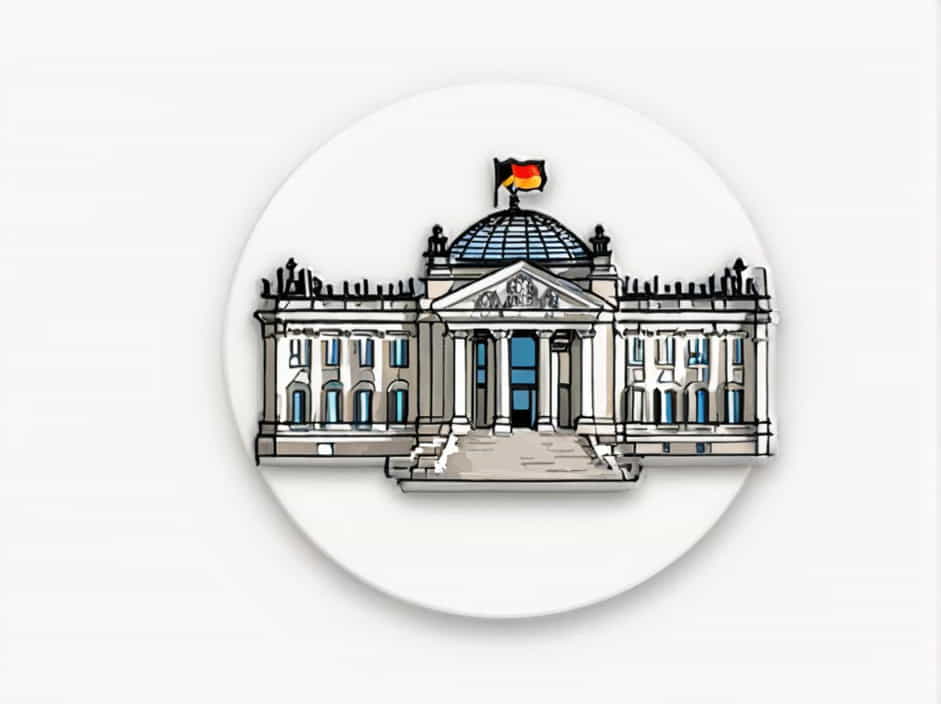The Reichstag is one of the most historically significant buildings in Germany. It has played a central role in the country’s political history, from the German Empire to modern democracy. But what does Reichstag actually mean, and why is it important?
This topic explores the meaning, history, significance, and modern role of the Reichstag, explaining its impact on German politics and global history.
Definition of Reichstag
The word Reichstag comes from German, where “Reich” means empire or realm and “Tag” means assembly or diet. In simple terms, Reichstag refers to the national legislative body of Germany, similar to a parliament.
Historically, the term has been used in different contexts:
- Reichstag of the Holy Roman Empire (12th-19th century) – An imperial assembly of various rulers.
- Reichstag of the German Empire (1871-1918) – The parliament of the German Empire under Kaiser Wilhelm.
- Reichstag of the Weimar Republic (1919-1933) – The democratic parliament of post-World War I Germany.
- Reichstag of Nazi Germany (1933-1945) – A symbolic parliament under Adolf Hitler’s dictatorship.
- Modern Reichstag Building – The seat of the Bundestag (Federal Parliament of Germany) today.
The History of the Reichstag
The Reichstag’s history is deeply connected to the political and social changes in Germany.
1. The Holy Roman Empire Era (12th-19th Century)
During the Middle Ages, the Reichstag was an imperial assembly of princes, nobles, and church leaders in the Holy Roman Empire. It functioned as an advisory body to the Emperor rather than a democratic institution.
2. The German Empire (1871-1918)
When Germany unified under Otto von Bismarck in 1871, the Reichstag became the parliament of the newly formed German Empire. While it had elected members, the real power remained with the Kaiser (Emperor) and the Chancellor.
3. The Weimar Republic (1919-1933)
After Germany’s defeat in World War I, the Weimar Republic was established as the country’s first real democracy. The Reichstag became a powerful legislative body, but political instability and economic crises weakened its effectiveness.
4. Nazi Germany and the Reichstag Fire (1933-1945)
One of the most infamous events in the Reichstag’s history was the Reichstag Fire of 1933. A mysterious fire destroyed much of the building, and the Nazis used it as an excuse to crack down on political opponents.
After this event, the Reichstag lost its real function, and Hitler ruled Germany as a dictator, making the parliament largely symbolic.
5. The Cold War and Reconstruction (1945-1990)
After World War II, Germany was divided into East and West Germany. The Reichstag building, located in West Berlin, remained damaged and unused as the government moved to Bonn.
6. The Modern Reichstag (1999-Present)
After the reunification of Germany in 1990, the government decided to restore the Reichstag and make it the seat of the Bundestag (Federal Parliament of Germany). Today, it is a symbol of democracy and transparency.
The Reichstag Fire: A Turning Point in History
One of the most controversial events in the Reichstag’s history is the Reichstag Fire of February 27, 1933. The fire destroyed much of the building, and the Nazis blamed communists, using it as a reason to pass the Reichstag Fire Decree, which restricted civil liberties and allowed Hitler to seize more power.
Historians still debate whether the fire was set by a Dutch communist named Marinus van der Lubbe or if it was a Nazi conspiracy to justify their dictatorship.
The Reichstag Building Today
The Reichstag building is one of the most famous landmarks in Berlin, Germany. After its renovation in the 1990s, it became a symbol of Germany’s democratic rebirth.
1. Architectural Features
- The building features a modern glass dome, designed by architect Norman Foster, symbolizing transparency in government.
- Visitors can walk inside the dome and watch the parliamentary sessions below.
2. Political Significance
- Today, the Reichstag houses the Bundestag (German Federal Parliament).
- It represents Germany’s commitment to democracy, free speech, and open governance.
3. A Major Tourist Attraction
- The Reichstag is one of Berlin’s most visited landmarks, attracting millions of tourists each year.
- It offers free tours, allowing visitors to learn about German history and politics.
Interesting Facts About the Reichstag
- The famous phrase “Dem Deutschen Volke” (“To the German People”) is engraved on the front of the building.
- The Reichstag was damaged during World War II, with Soviet soldiers famously raising their flag over it in 1945.
- In 1995, artists Christo and Jeanne-Claude wrapped the entire Reichstag in silver fabric as an art installation.
The Symbolism of the Reichstag
The Reichstag is more than just a building—it represents Germany’s turbulent past and its commitment to democracy.
- During the Empire: It symbolized monarchy and limited representation.
- During the Weimar Republic: It symbolized hope for democracy.
- During Nazi Germany: It became a tool of dictatorship.
- After Reunification: It became a symbol of a united, democratic Germany.
The Reichstag has played a crucial role in Germany’s history, from the days of the Holy Roman Empire to modern democracy. It has witnessed the rise and fall of empires, wars, and dictatorships, ultimately emerging as a symbol of freedom and transparency.
Today, it stands as a reminder of the past and a beacon of democracy for the future.
